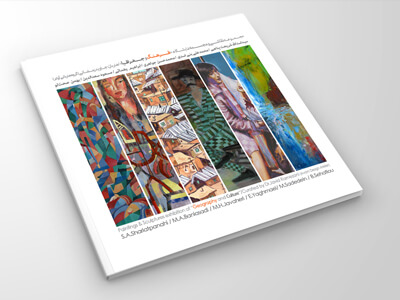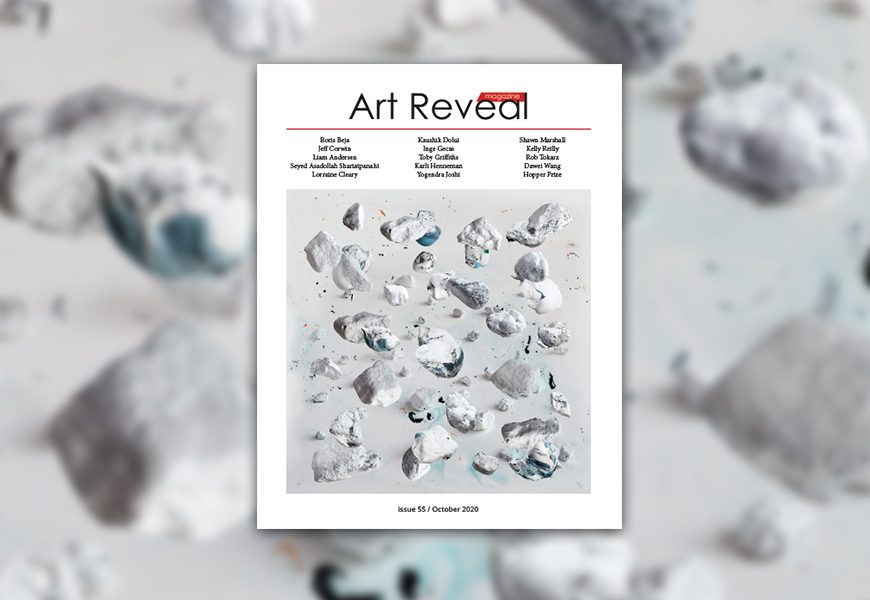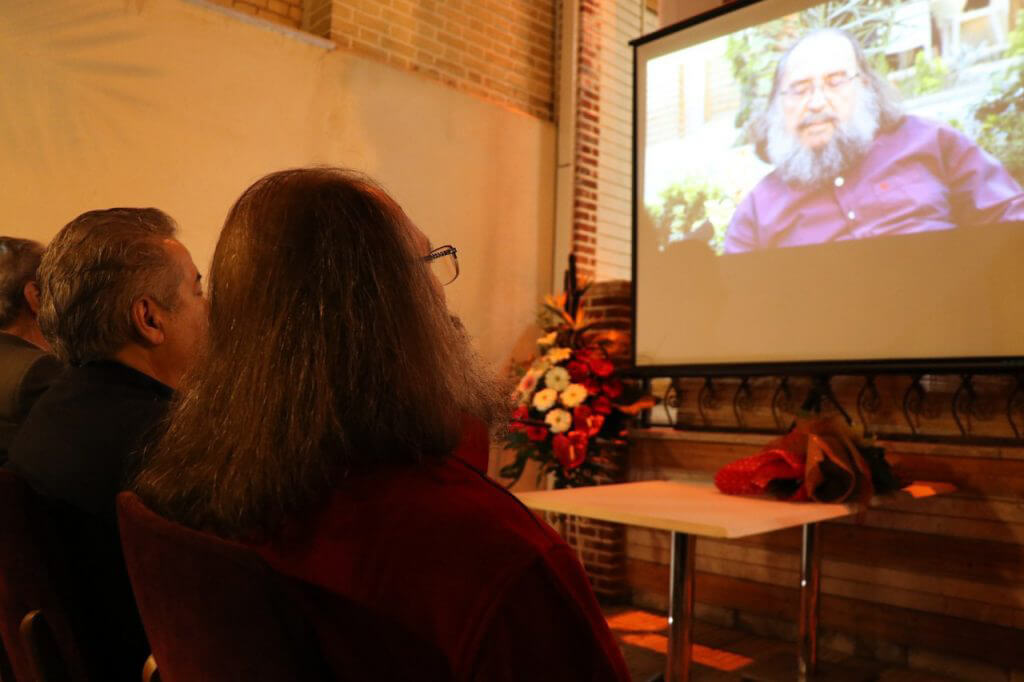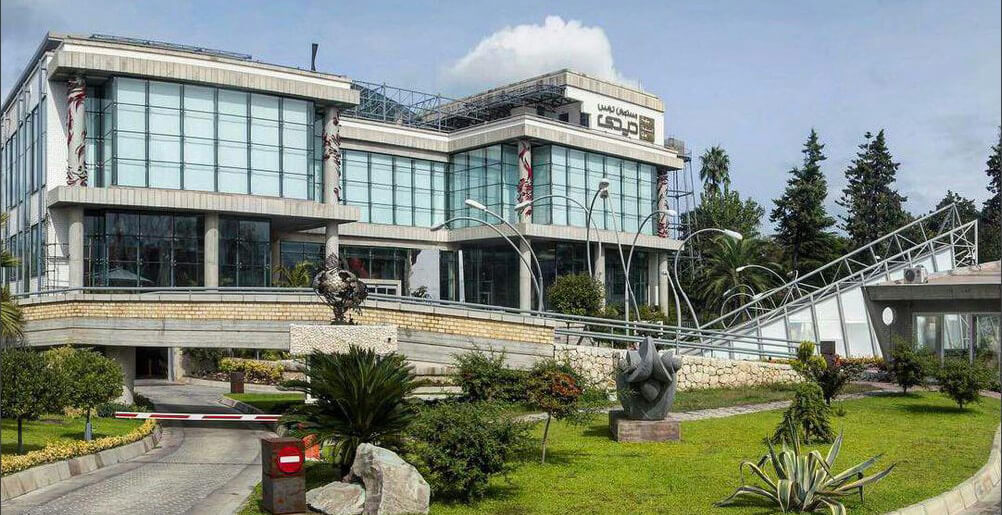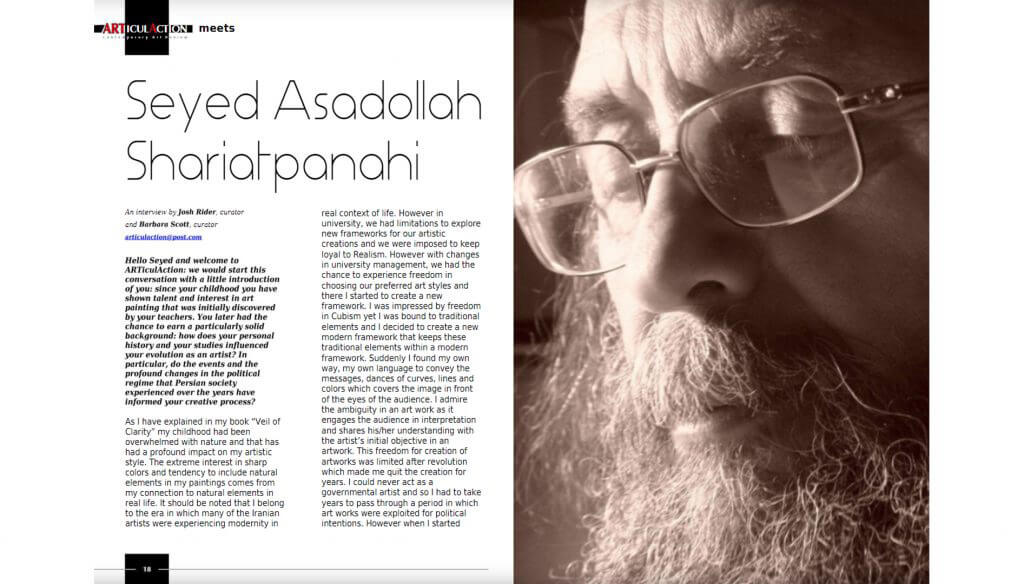Seyed Asadolah Shariatpanahi
Seyed Asadollah Shariatpanahi was born in 1938 in Semnan, Iran. At his childhood and under influence of his grandfather, who was painting Imams [Shiite] portraits, Seyed Asadollah fortified his inclination towards painting and art.
His talent and interest in art painting was initially discovered by his teachers, and then with recommendation from one of the renowned elders of his hometown, Shariatpanahi entered the circle of Esma’il Ashtiani, a protégé of Kamal-ol-Molk, and became his student.
After getting his diploma in 1960, he was employed by the ministry of education and became a painting teacher in Semnan high schools in 1963.
In 1965, he entered Faculty of Fine Arts in Tehran University and studied art painting under Morteza Momay’yez, Seyhoon, Behjat Sadr, Vaziri-Moghaddam, and Javad Hamidi who are recognized as pioneers of the visual arts in Iran.
Between 1965-1967, under influence of Hooshang Seyhoon (who was an advocate of the traditional architecture in comparison to modern art that was new in Iran), he moved towards realism in his paintings. Seyed Asadollah became increasingly interested in portraiture, and painted famous characters.
After Seyhoon, when Professor Fazlollah Reza became the dean of Tehran University, the previous (traditional) milieu of the university gave way to modernity. He was encouraged by his professors at university to utilize of modern techniques in painting. Thus, Seyed Asadollah experienced freedom of thought in art domains and acquired a free rein in their practice of art. In fact, in 1960s modernity was a new horizon in the sky of the Iranian art.
From 1975 till 1996, he had been member of jury in the annual festival of arts painting, held by ministry of education in Iran, where the talented students were identified.
In 1969, when he finished his bachelor study, he returned to his home-town, Semnan, and started his job in the organization of education for Teachers. He also taught art at Center of Intellectual Training for Children and Teenagers, which led to the birth of a new generation of artists who now hold their own spectacular artistic positions.
In his early work in 1970s and after completion of bachelor program, he was impacted by Cubism. Human body in a variety of different configurations and viewpoints was the main focus of his artworks which were analyzed, broken and deformed in a two-dimensional form in a greater context.
He continued this in the same manner until the Islamic Revolution in 1979, when Iranian society experienced profound changes in the political regime. Changes were experienced in every section of social life and the arts, including the visual arts, were no exception. During this period after revolution till the end of Iran-Iraq war, when revolutionary Islamic art was dominated, government was against any sort of modernism. His career was influenced by revolutionary excesses and he was banned for a year from serving in the organization of education. Shariatpanai who was in his early way of professional career, had to put away all his paintings and stop painting to save his life.
In early 1990s, after the war ended, when Iranian society was ready to experience the post -revolutionary period in art and culture, Shariatpanahi did not find the society to be motivational and the extreme ideological medium in the society was still governing every aspect of social life.
In 1997, almost after 30 years of graduation from university, when reformists’ period started and huge development in contemporary Iranian art happened by being connected to the world, Shariatpanahi benefited from a relaxation of the rules thus re-started his art paintings and now backed by 30 years’ knowledge from traditional architecture, history of art in the world, as it was one of his lecture courses.
The golden period of his career began after 2000 by entering into his new-found Iranian-modernity paintings.
His artwork after 2000, are the scene of the interaction of modernity and the traditional world in such a way that his works include signs of both modernity and modern system of thought along with traditional paradigm of thinking. Shariatpanahi has consciously carried out his role in this historical twist which is carried out by avoiding the conflicts of modern-traditional worlds and creating an Iranian modernity.
Shariatpanahi’s works possess modern features because he detaches himself from his work and studies it as a subject requiring more recognition (separating man). He is also centripetal in the sense that he places his own understanding in the center of his ideology and offers his perception of the notions around him. In some of his recent paintings between 2012-2016, by placing the pictures of his own face into his paintings, he not only does detach himself from the world around him but also parts from his own identity as the subject matter of the painting.
Seyed Asadollah Shariatpahi’s work has been the subject of several solo and group exhibitions in national level since 2011 to 2016; among which three exhibitions in the Koomesh Cultural Center of Semnan between 2011-2015 and one exhibition in the Tehran’s Niavaran Cultural Center in 2016 can be called.
In 2015, his collection of painting was published in Iran in bilingual (Persian-English) called “The Veil of Clarity”.
He had been teaching art paintings over 35 years in several high educational centers in his home-town from 1960-1996 and holding courses in the area of art painting and art history at University of Semnan, Iran, as invited lecturer.
Throughout his 50 years’ effort in teaching art, Seyed Asadollah has received numerous accolades. Among which, in 2015, in appreciation of his triumphs and impacts on Iranian painting and for promotion of Iranian drawing art, for more than half a century, a celebration alongside an exhibition of his artworks was held in Iran (by Ministry of Culture and Islamic Guidance).
Asadollah Shariatpanahi now lives in Semnan where he continues to teach painting to his students at his own art gallery.







